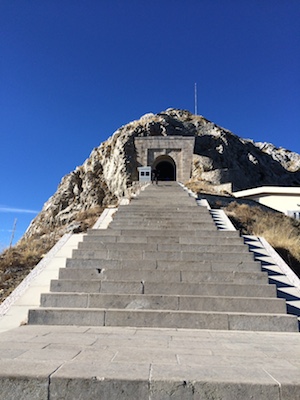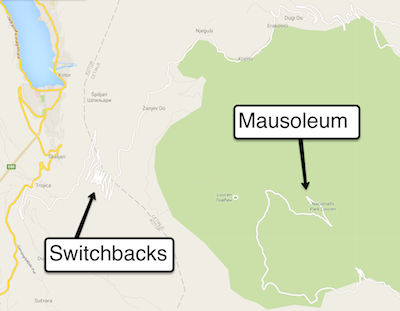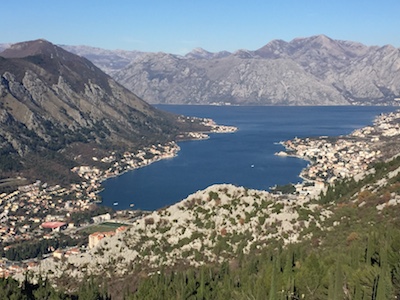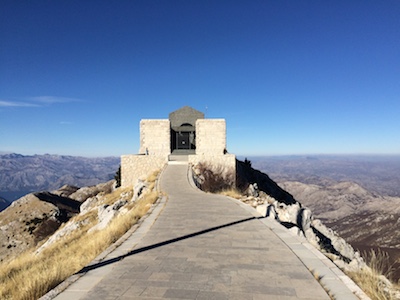Most countries only treat political and military leaders as national heroes. But some, like Montenegro, elevate poets to the status of national hero. That’s a romantic notion, isn’t it?
High atop Mount Lovćen (LUFF-chin), one of those sharp mountain peaks that create the unique geography of the Bay of Kotor, is the mausoleum of Petar II Petrović-Njegoš. Thankfully he has achieved one-name status in Montenegro and Serbia and is popularly known more simply as Njegoš (pronounced, as best as I can determine, “knee-AY-gohsh”). It’s a monument befitting any national hero whose name would be recognizable on a global scale, not just within the tiny nascent country of Montenegro. The views stretch south to Albania and Greece, west across the Aegean, north to Bosnia, Serbia, and Hungary, and east to Bulgaria and the Black Sea.


But it’s the views down into the Bay of Kotor that you likely will come here for. Njegoš’s mausoleum is the centerpiece of Lovćen National Park, situated neatly above Kotor, Tivat, and Budva (almost). You can drive up to it, and the drive alone—especially the couple-of-dozen spectacular switchbacks on the approach from the west—is worth the time. At almost 6,000 feet it can be a few degrees cooler than the Aegean beaches below, and during winter expect to find snow on the ground (and sometimes closed because of wintry conditions).

To be fair, Njegoš was much more than a mere poet. His story is surprisingly complex (https://en.wikipedia.org/wiki/Petar_II_Petrovi%C4%87-Njego%C5%A1). He was a poet-philosopher, a prince, a bishop of the Serbian Orthodox faith, and became the effective ruler of Montenegro in 1830 when his uncle, Petar I, died. Njegoš instituted significant and unpopular tax reforms but achieved national hero status with his struggles against the Ottoman Empire. He favored a union with Serbia which didn’t occur during his lifetime but was achieved with the formation of Yugoslavia after World War I. Nevertheless, the literature you are handed when you visit his mausoleum describes him simply as a poet bishop.
His story is even interesting after he died. It was his request to be buried in the Serbian Orthodox chapel he had constructed atop Lovćen for his uncle Petar I. At first Njegoš was buried in a monastery, but then he was reinterred on the mountaintop. When the area was occupied by the Austro-Hungarian Empire, the occupiers wanted to erect a monument to Emperor Franz Joseph on the same spot. Njegoš was removed, but in 1925 after the formation of Yugoslavia he was returned. After the communists came to power the Serbian-styled chapel that had been a mausoleum for 80 years was deemed not communist enough, so it was redesigned into the Soviet-styled concrete monolith it is today. You can practically hear communist nationalistic music playing in the background when you visit.



Getting back to Njegoš’ poetry, his masterpiece is The Mountain Wreath, an epic poem and play based on the legendary Christmas Day massacre of Montenegrins who had been forced to convert to Islam under Ottoman rule. While it was great at stirring up national sentiments, don’t expect it to be made into a cheery Christmas movie anytime soon.







